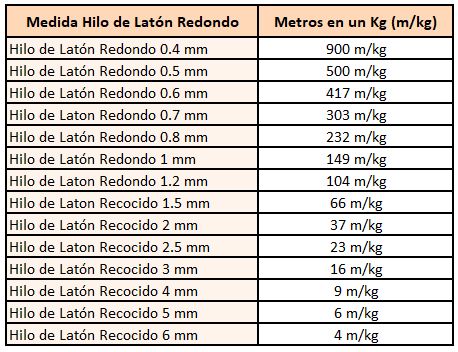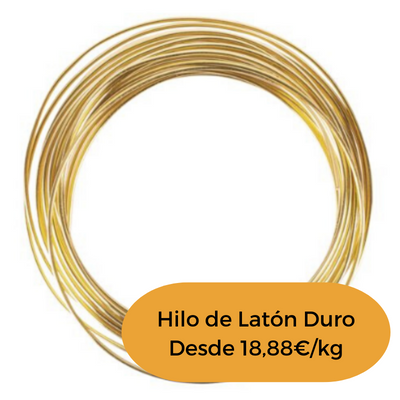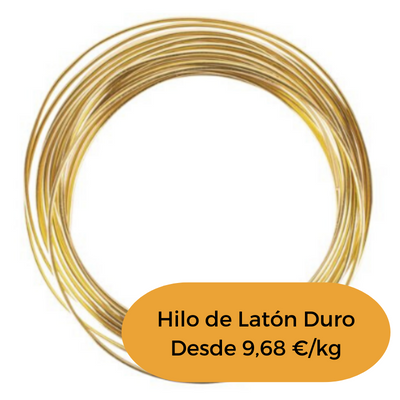Equivalence of kilograms to meters of the Brass Wire
Equivalence of kilograms to meters of the Brass Wire
In this Post we will focus on finding out the equivalence of brass thread and resolve some doubts that may arise when purchasing this product.
Brass wire or brass thread is a material used by different industries such as decoration, jewelry and handicrafts. There are many doubts when buying a stainless steel thread, in this post we are going to solve some doubts that our clients usually have.
Annealed or hard brass wire?
- Annealed brass wire it is easier to handle as it can be bent and allows for more specific work, which is why it is often used for jewelry design work or for making handicraft figures.
- The thread Hard brass it has greater firmness so it is more complicated to mold it if we want to make a precise figure, it is usually used to make fences or meshes.
If we want to cover a surface that is too large to be covered with thread, we can choose to use brass coils, since being a wide and thin material it is very easy to manipulate.
Equivalence of kilograms to meters of brass wire
Once we know what type of thread we need to do the job we want, we may have a question about how much I have to buy. Normally, the brass thread It is bought by the kilo, that is why we are going to discover in a very easy how many meters are there in a kilogram of brass wire.
We will follow the following steps:
1. Choose the size of the Thread
The most important thing is to correctly choose the thickness of the thread that we want. At Zavala we recommend that you choose this size according to the work you are going to do. For more manual work such as creating jewelry, we recommend thinner sizes such as 0.4 to 1 millimeter, and to make more robust figures, use a thicker size such as 1.5 millimeters.
2. Find out how many kilograms exist in a meter
We want to know how many kilograms there are in one meter of the wire we want. But first we have to take into account that in order to calculate it we need to use the density of brass, which is normally 8.5 – 8.7 g/cm3, although there may be small variations depending on whether the wire is hard, annealed or semi-annealed. Therefore the calculations will be approximate, in this case we will use a density of 8.5 g/cm3
To find out how many kilograms there are in a meter of thread we will use the following formula:
(Thickness/2)2 x π x Density/1,000 = kg/m
To make it clearer, we are going to see it with an example, imagine that we are interested in acquiring 1.5mm thick brass wire, so we will apply the formula:
(1,5/2)2 x 3.1416 x 8.5/1,000 = 0.015kg/m
This result is the same as saying that there is 0.015kg in a meter of 1.5mm brass wire.
3. Rule of three
Remember that our goal is to know how many meters we have in a kilogram of brass wire, since this is normally the format in which it is purchased. To find out this we only have to apply a rule of three to the result. figured out in step 2.
To make it clearer, we will use the previous example with the measure of thread brass of 1,5 millimeter. We saw that there is 0.015kg in a meter of thread, so:
15 grams = 1 meter
1,000 grams = x meters
If we solve the rule x=1*1,000/15 the result is equal to x = 66 meters. so in a kilogram of yarn 1,5 millimeters that we buy will correspond to about 66 meters of thread approximately. You can apply this rule to any measure you want to acquire from Thread Brass.
For your convenience guide The following table shows the equivalence of kilograms to meters of Brass Wire that you will be able to find in Zavala.





Impressively useful this publication in relation to the topic of beauty treatments.
I hope to see more posts like this on the internet.
Feel free to visit my page :: Maria Teresa
Thank you very much for your contribution, we are glad that you could be of help.
A cordial greeting.